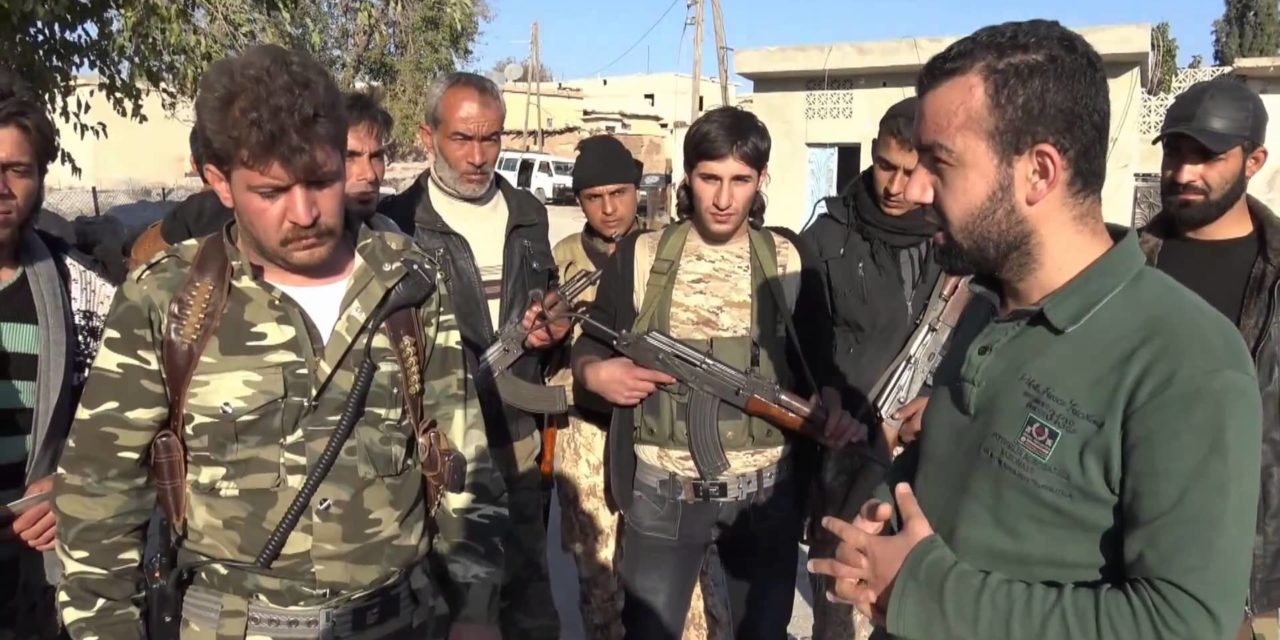PHOTO: Rebels fighting the Islamic State in northern Aleppo Province, November 2015
The failure of the $500 million US train-and-equip program for Syria’s rebels to fight the Islamic State was anticipated even before it was implemented.
The program, launched by the Obama Administration in September 2014, envisaged the provision of a battlefield force of 5,000 fighters by the end of 2015. However, from the outset, it foundered on a central difference with rebels: the US insisted that they should only confront ISIS, whereas rebel factions wanted a priority on the battle against the Assad regime.
So by summer 2015, US officials in Turkey had only approved a fraction of the 15,000 rebel applicants for the program. Yet, needing to show that it was doing something on the ground against the Islamic State, Washington put a group of 54 personnel into Syria in July 2015 — and made sure that the media knew of the deployment. The outcome was disastrous, as was a second entry of more than 70 fighters later in the summer. The US commander in the Middle East, General Lloyd Austin, had to tell a Congressional hearing in September that “only four or five” men remained on the frontline.
Yet, if none of this is surprising, the depth of the failure — revealed in detail by Roy Gutman of McClatchy — is still striking, especially as the US continues to proclaim that it has a strategy to “degrade and destroy” the Islamic State in Iraq and Syria.
What Really Happened to the US Train-and-Equip Program in Syria
Roy Gutman, McClatchy News Service
When the first group of Syrians from a U.S.-trained force intended to combat the Islamic State crossed into their country from Turkey in mid-July, they arrived in uniform carrying M16 rifles, mortars and flak vests. But they had no expense money, little food and no clear idea of how they, just 54 men, were to do battle against the extremists.
Most had been in near-total isolation during their two months of training in Turkey and Jordan, and they wanted to see their families, many of whom had been under heavy government bombardment. And it was Ramadan, a month of fasting, so they voted to take a two-week break, according to their elected commander, a former Syrian army lieutenant colonel, Amin Ibrahim.
Disaster struck when the break was over and they were headed back to their base. On July 29, a day after US aircraft had attacked an outpost of the Nusra Front, al Qaida’s Syrian affiliate, Nusra seized Col. Nedim Hassan –– the commander of Division 30, the rebel unit in which the trainees were to be embedded –– along with seven of his men.
Then on July 31, Nusra attacked the headquarters of the division in a battle that ended with U.S. airstrikes and ground intervention by Kurdish militias. As many as 50 Nusra members died in the fighting, according to some reports, but Nusra managed to seize 10 graduates of the so-called train-and-equip program.
Ten weeks later, the Pentagon announced that it had halted the program, which until that moment had been the keystone of the Obama administration’s policy to combat the Islamic State in Syria.
The program’s demise has been ascribed to a number of factors, including the participants, the Turkish intelligence agency MIT and a Syrian militia, the Kurdish People’s Protection Units, better known as the YPG.
But a McClatchy investigation shows that the primary factor may well have been the United States itself, which conceived of a program that didn’t have the support of the people it was intended to train and was viewed with deep skepticism by its key training partner, Turkey.
Adding to the calamity was the ill-timed U.S. airstrike against Nusra, an Al-Qa’eda force that could easily avenge its losses by targeting the train-and-equip units as they returned to their base from their unscheduled home leave.
Interviews with two Syrian rebel officers and two recruits who were involved in the training course depict a program that was chaotic from the beginning, with daily arguments over goals, low morale among the participants and clashes over resources, from food supplies to armed escorts.
A Clash Over Objectives
ven Ibrahim, the trainees’ commander, said he’d contemplated quitting midstream. He didn’t only because he knew it would doom the effort. “I’m the commander. If I quit, everyone will,” he said he’d often thought.
But Ibrahim said he’d never bought into the training mission’s goal of targeting the Islamic State before turning to battle the government of President Bashar Assad.
“Every day I had a meeting with them,” Ibrahim said of the American trainers, who numbered one for every two trainees. “I told them the whole idea is wrong. I said: ‘We are Syrians. Our problem is with the regime. Help us to get rid of the regime.’ The response was: ‘You should not shoot a bullet against the regime,’ ” he recalled.
More than once, “we all got up and walked out.” Sometimes the Turkish trainers asked the Americans to leave the room. “Either follow what the Syrians say or just leave,” he quoted the Turkish trainers as saying. The Turks “were always on our side,” Ibrahim said.

